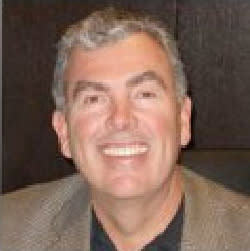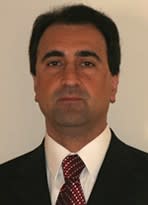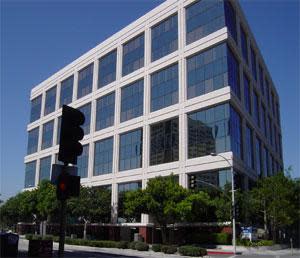Kickbacks And Roses: Inside The SAG Pension & Health Funds Scandal – Exclusive

EXCLUSIVE: The lawsuit alleging embezzlement of millions of dollars from the $3 billion SAG Pension & Health Plans was settled behind closed doors in confidential arbitrations. Deadline has obtained the sealed deposition of former SAG P&H Plans CEO Bruce Dow, however, in the arbitration of a wrongful termination suit filed by whistleblower Craig Simmons.

Dow’s testimony provides fresh insight into an organization that had grown dysfunctional — beset by bitter infighting, extravagant spending and allegations running the gamut from embezzlement, nepotism, insider trading to unauthorized access to medical records. And it throws new light on the culture of corruption that rocked the benefit plans and eventually led to Dow’s resignation in 2012.
The central figure in the alleged kickback scheme was Nader Karimi, the Plans’ chief information officer, who was fired in 2009 for allegedly taking payments from outside tech vendors in exchange for lucrative contracts. “Any allegations of wrongdoing against Mr. Karimi are certainly denied,” his attorney, Jeffrey Thomas, told Deadline, “and to my knowledge, no criminal charges of any kind have been filed against him.”
The U.S. Deptartment of Labor is investigating allegations of malfeasance at the benefit plans, but won’t confirm whether Karimi is a target of that probe. “The investigation is ongoing, and as such, we can’t offer any comment on it,” spokesman Mike Trupo told Deadline. The DOL has been investigating allegations of corruption at the SAG P&H Plans since September 2010.
“How much money were you told he embezzled?” Brown asked. “I believe the number was in the $500,000 range,” Dow answered.
“I have never been contacted by the DOL and have no information about what the DOL is, or was, doing,” Karimi’s attorney said. “The DOL was looking at alleged unlawful actions at the SAG Pension & Health Plans other than Mr. Karimi.”
Simmons, the Plans’ former executive director of human resources, made headlines in 2011 when he filed a wrongful-termination suit against the Plans, accusing Dow of malfeasance, nepotism, and covering up Karimi’s alleged embezzlement. In his deposition, Dow, who has never spoken publicly about the scandal, denied all of Simmons’ allegations, saying that he fired Karimi as soon as he learned of the alleged embezzlement:
“At some point, did you fire Mr. Karimi from the Plans?” Dow was asked by Simmons’ attorney, Robert Brown.
“Yes,” Dow replied. “In March or April of 2009.”
“At some point did you learn that Mr. Karimi embezzled money from the Plans?”
“Yes.”
“And when did you learn that?”
“I’m thinking it was either April or May of 2009.”
“And to your knowledge, was Mr. Karimi using vendors of the Plans in order to steal money from the Plans?”
“Yes.”
“And essentially, it was a situation where Mr. Karimi was fraudulently paying money to vendors or consultants, and then receiving kickbacks?” Brown asked.
“Yes.”
“And how did you find out Mr. Karimi was embezzling money from the Plans?”
“Through our lawyers,” Dow replied.
“At the time that you learned that Mr. Karimi had embezzled funds from the Plans, how much money were you told he embezzled?” Brown asked.
“I believe the number was in the $500,000 range,” Dow answered.
Dow said it had been difficult to determine exactly how much money was missing, but testified it could have been as much as $3 million. The Plans have received more than $2.5 million from its insurers to recoup part of the loss.

Dow testified that he first became wary of Karimi when the Plans’ chief financial officer, Alice Cardenas, brought in a contract that “looked suspicious. And she talked about her reservations of that… We started looking at all the contracts.”
Cardenas, who had recommended Simmons for his job, left the Plans in May 2010 to become the administrator of the SAG-Producers Industry Advancement Cooperative Committee. Dow, the IACF’s CEO, fired her a few months later after learning that she’d allegedly filed a false expense report while still working at the Plans. It was for an investment conference, Dow said, that never took place. He testified that the Plans’ Controller had discovered that she had actually gone to Santa Barbara to attend her son’s sports camp and billed her expenses to the Plans. He and Simmons went to her office and fired her on the spot.
After being alerted to Karimi’s suspicious dealings with vendors, Dow testified that “we started to consolidate the budgetary items…we broke them down by vendors, to see what the dollar amounts were.” Simmons, who would later be fired by Dow as well, then became part of the investigation into Karimi’s alleged scheme. And when Dow called Karimi into his office to confront him, Simmons was there.
“What did you say to Mr. Karimi?” Brown asked.
“Basically questioning him about the vendors, and you know, not knowing them, and basically trying to get him to contact the vendor on our behalf and allow us access to the records on the vendor,” Dow replied.
Dow asked Karimi to call the vendor on Dow’s office phone. Karimi made the call and told Dow that the vendor had agreed to give the Plans access to their records. Dow said he now thinks Karimi was faking the call. Dow, who said Karimi’s deals with the vendor did not seem consistent with past transactions, said that he then began an “aggressive conversation” with Karimi, and that Karimi then “pitched the idea that maybe he should resign.”
“How did you respond?” Brown asked.
“I said maybe he should,” Dow said. “I can’t recall all the details. I know he didn’t come back into the office.”
Karimi, who is currently the CIO at the BCBG Max Azria fashion house, did not return calls for comment.
“I was terminated for bringing to the attention of SAG’s controllers the misappropriation of funds,” whistleblower Gary Mathis testified.

Simmons claimed in his 2011 wrongful termination suit that he was fired for blowing the whistle on corruption at the SAG P&H Plans. He claimed Dow sent the Plans’ insurance business to his wife and that she pocketed part of the premiums; that Dow paid his brother-in-law for the no-show newsletter job; and that Dow under-reported the amount of money allegedly embezzled by Karimi.
Whistleblower Gary Mathis worked directly under Karimi and made strikingly similar claims in a July 6, 2009, letter to the DOL. “I was terminated for bringing to the attention of SAG’s controllers the misappropriation of funds by the CIO Nader Karimi and CEO Bruce Dow, with extensive supporting documentation,” Mathis wrote. “For example, the CIO was paying $140,000 to a friend’s consulting company” and “falsifying documents,” while Dow had hired “an insurance company where (his) wife is the VP, a major conflict of interest. His wife receives bonuses/commissions for SAG’s major insurance accounts.”
Mathis told the DOL that Dow’s wife, who was then SVP of USI Insurance Services — at the time a division of Goldman Sachs — sold various commercial policies used by the SAG benefit plans, including Workers’ Comp, general and miscellaneous liability coverage, professional liability, automobile insurance, group health, 401(k), life insurance and malpractice coverage. Her brother, Mathis told the DOL, “is what is referred to as a phantom employee at SAG. His position is called Communications Manager. He has been on SAG’s payroll, pension plan and full healthcare for almost 12 years now but never is seen or worked at the SAG offices.”
Mathis also alleged that Dow’s first wife, Mary, “owned a claims audit company under her maiden name that SAG (P&H Plans) paid to audit their health claims.”

Dow testified that DOL agent Richard Vera showed up at the Plans’ Burbank offices in 2011 asking questions about his wife and brother-in-law. During that meeting, Vera told Dow that having his wife work as a broker for the plans’ insurance policies “could have the appearance of a conflict of interest.” Dow told Vera that any appearance of a conflict had ended, at his insistence, five years earlier when she “was excluded from receiving any direct or indirect benefit” from her position.
In his deposition, Dow said he told Vera that “any beneficial financial arrangement of my spouse was stopped at the end of 2006, and that the plans, ever since I’ve been there, had always kept another brokerage service company that wrote a significant number of policies for the plans.” He also noted that “the division president gave me assurances that there would be no financial benefit for her.”
Over three days of testimony, Dow painted a rather unflattering portrait of Simmons who, he asserted, wasn’t getting along with COO Chris Dowdell and CFO Michael Estrada, who now holds Dow’s old job. “The conflict was rather constant,” Dow testified, claiming that Simmons had become “insubordinate” and “very unprofessional,” allegedly using his position to learn the salaries of other executives, handing out unauthorized pay raises to workers in his department, and making unauthorized disbursements. Those payments, Dow said, were made “in such a way to create a deception that I had approved (the) disbursements when I had not.”
On March 9, 2011, Dow confronted Simmons about these and other allegations that had surfaced against him. The meeting did not go well. Dow had told him it was going to be a budget meeting, but when they sat down, he slid a piece of paper in front of Simmons. It was one of the disbursements Simmons had made and allegedly signed “Okay” on Dow’s signature line. “As you can see, this is not a budget meeting,” Dow told him.
“When you asked him if he signed it, what did he tell you?” Brown asked.
“Yes,” Dow said.
The meeting with Simmons only lasted 15 or 20 minutes, and when it was over, Dow told him he was going to be suspended with pay while he was being investigated. That’s when Simmons snapped, according to Dow, who recalled that “he got very angry and made threats.”
“We wanted to make sure, given the amount of confidential files he had in his office, that [Simmons] did not walk out with them,” Dow told the lawyers.
“And what threats did Mr. Simmons make?” Brown asked.
“That he was going to make some type of disclosure.”
“Did he say what he was planning to disclose?” Brown asked.
“No.”
“And when Mr. Simmons said that he was going to make some kind of disclosure, did you reply or respond to that?”
“I cautioned him about doing that, basically disclosing investigative information,” Dow said.
Asked how Simmons responded to that, Dow said: “I don’t recall the exact words. He was very angry.” At the end of the meeting Dow said he had Simmons escorted from the building. “We wanted to make sure, given the amount of confidential files he had in his office, that he did not walk out with them,” Dow said, noting that he was concerned about that “because I believed his threat related to files of our investigation in the Karimi matter, and they, at that point in time, had not been publicly disclosed.” Earlier in the day, security cameras showed him “carrying a bunch of files out,” he recalled.
Dow also testified that he later learned that Simmons had been snooping around in the medical files of the health plans’ beneficiaries.
“And why do you believe that Mr. Simmons accessed the medical information of the participants of the Plan?” Brown asked.
“Well, he did it to my own wife,” Dow answered. “And there were also discussions about him openly discussing some of the medical conditions of individuals.”
“Was your wife a Plan participant?” Brown asked.
“Yes,” Dow answered. “She’s a beneficiary of mine, so that makes her a participant.
“What are you claiming that Mr. Simmons did with respect to accessing confidential medical information about your wife?” Brown asked.
“Basically, he said that the Plan paid for breast implants,” Dow answered.
“And your wife had breast implant surgery?” Brown asked.
“Yes,” he said, but noted that it was at no cost to the Plans.
“And you believe that the source of Mr. Simmons’ statement was his review of your wife’s confidential medical file?” Brown asked.
“Mr. Simmons made an unauthorized access into my wife’s medical history,” Dow answered. “Mr. Simmons basically defamed my wife, defamed me, by saying that the Plans had paid for breast implants…So from my perspective, this was a vicious attack to embarrass, both my wife, who is not a party to this action. Every Plan employee knows the importance of guarding our participants’ records. That’s the only way we can remain credible. He went out of his way, as an attempt to destroy me, and that ended up on the front page of 30 distributions or newsletters, from Reuters and other places. It was a most horrific thing for my wife.”
After Simmons was suspended, Dow said he learned Simmons had “misappropriated funds” from the Plans to help his husband, an airline pilot. “We discovered the payment of the Plans on behalf of Mr. Simmons’ spouse to, I believe, it was the American Airlines 401K plan,” Dow testified. “I believed it was a misappropriation of funds by him.” Dow said that no criminal charges were filed in that matter because “he returned the funds.” Simmons has acknowledged that he steered about $25,000 of the Plans’ business to his husband’s marketing firm, Fortress Communications.
In one of the odder twists in the tale of intrigue, charge and counter-charge, it came to light that someone in the Plans revealed an extravagant sense of style. Dow said he learned that the Plans were spending lavishly on flowers and office parties.
“Our flower budget was amazingly high,” Dow testified, noting that the Plans had been spending more than $25,000 a year on flowers. “It was just a shocking number to me,” he said, “and it just didn’t seem to fit with what we were doing.”
Related stories
SAG Pension & Health Plan Whistleblower Craig Simmons Wasn't First To Ring Alarms
Embezzlement Allegations Over SAG Pension & Health Plans End Quietly
SAG-AFTRA National Board Urges Separate Health/Pension Fund Trustees To Unify
Get more from Deadline.com: Follow us on Twitter, Facebook, Newsletter

